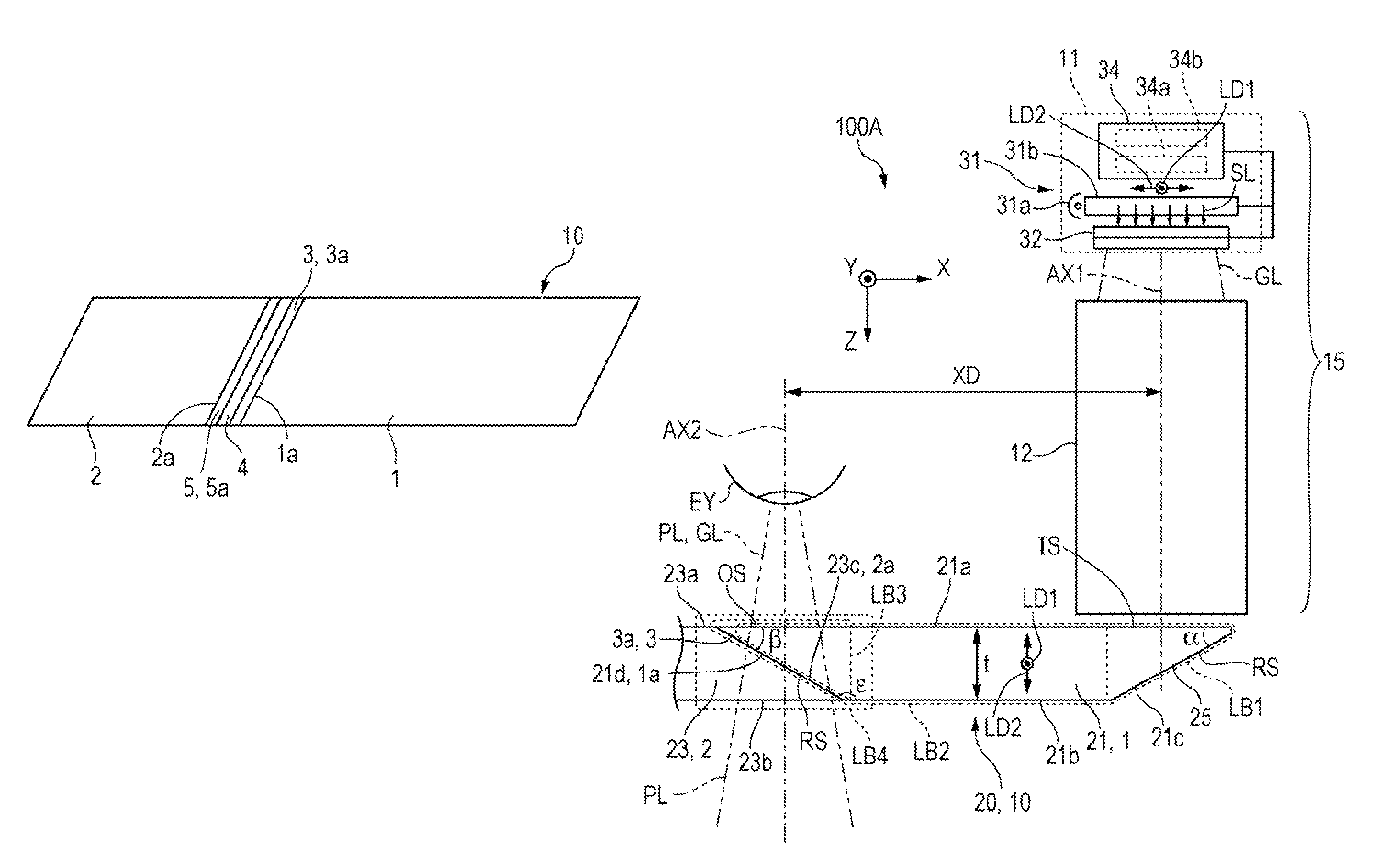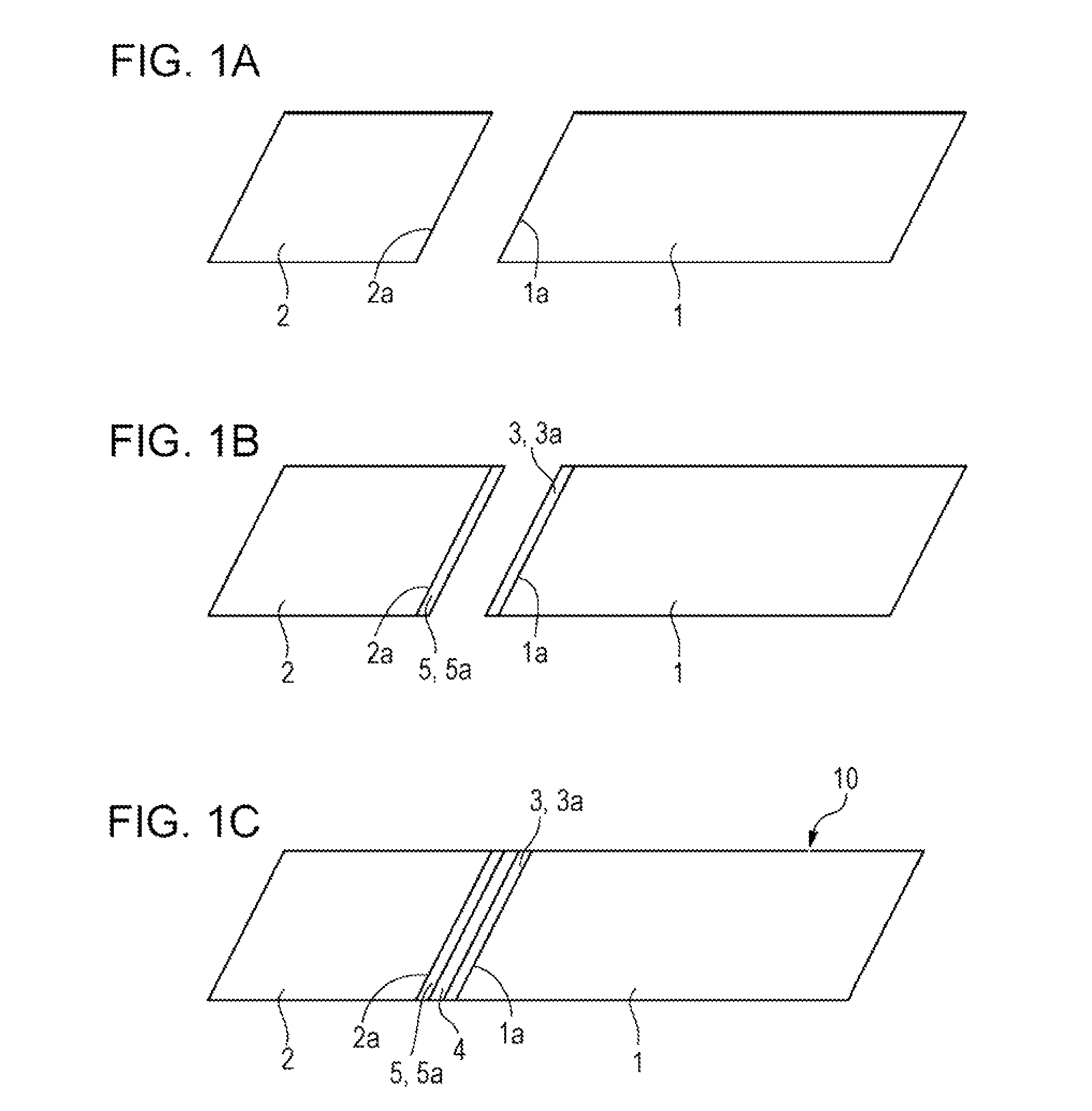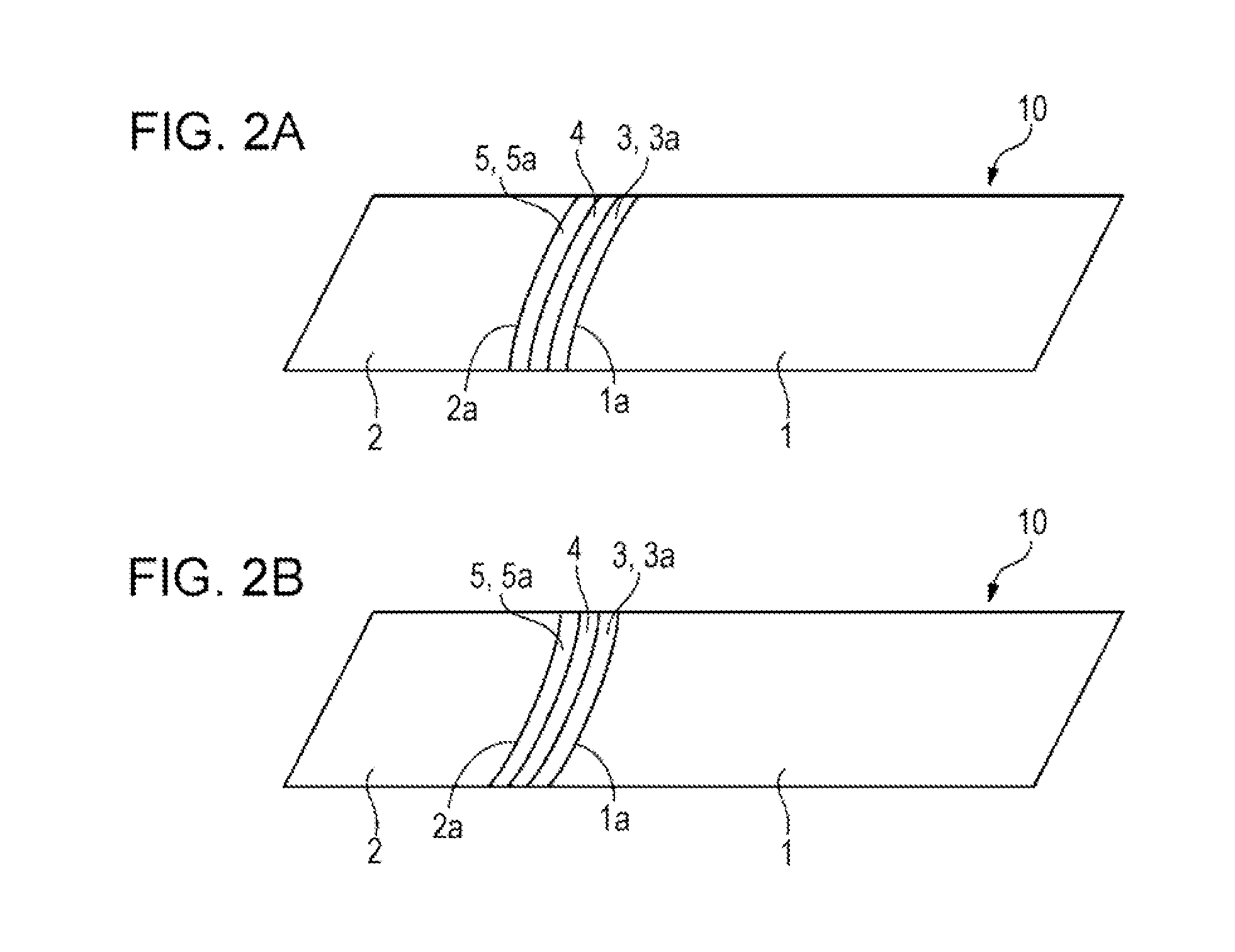Optical element, display apparatus, and method for manufacturing optical element
a technology of optical elements and display apparatuses, applied in the field of optical elements, display apparatuses, and methods for manufacturing optical elements, can solve the problems of poor adhesive properties, low degree of shape freedom, and inability to achieve weight reduction of optical elements, and achieve the effect of suppressing the deterioration of optical properties
- Summary
- Abstract
- Description
- Claims
- Application Information
AI Technical Summary
Benefits of technology
Problems solved by technology
Method used
Image
Examples
embodiment 1
Configuration of Optical Element
[0028]FIGS. 1A to 1C are diagrams illustrating an optical element according to Embodiment 1 of the invention. FIG. 1A is a diagram illustrating translucency members which are used in the optical element, FIG. 1B is a diagram illustrating a state before bonding the two translucency members, and FIG. 1C is a diagram illustrating the state as an optical element by bonding the two translucency members.
[0029]An optical element 10 which is shown in FIG. 1C, has a structure that two translucency members are bonded by an adhesive layer 4 interposing a functional layer 3 therebetween. More specifically, the optical element 10 includes a first translucency member 1, a second translucency member 2 that is made of cyclo olefin polymer or cyclo olefin copolymer, the functional layer 3 that is formed between the first translucency member 1 and the second translucency member 2, and the adhesive layer 4 having translucency that is formed between the functional layer ...
embodiment
Main Effect of Embodiment
[0043]As described above, if the optical element 10 is configured according to the optical element 10 of the embodiment and the method for manufacturing thereof, the second translucency member 2 that is made of cyclo olefin polymer or cyclo olefin copolymer is used, and thus there are advantages that a weight reduction can be achieved and a degree of freedom in shape is high.
[0044]Furthermore, the second translucency member 2 that is made of cyclo olefin polymer or cyclo olefin copolymer, has a low affinity to the adhesive, but the inorganic coating layer 5 having translucency is formed on the second translucency member 2, and thus the second translucency member 2 can be firmly glued to the first translucency member 1. Accordingly, since it is not necessary to perform surface reforming such as light irradiation depending on the low pressure mercury lamp, irradiation with the excimer ultraviolet light, plasma irradiation, and corona electric discharge, there ...
embodiment 2
[0049]FIGS. 4A to 4D are diagrams illustrating an optical element according to Embodiment 2 of the invention. FIG. 4A is a diagram illustrating the translucency member used in the optical element, FIG. 4B is a diagram illustrating the state of arranging the coating layer on the second translucency member side, FIG. 4C is a diagram illustrating the state of arranging the coating layer on the first translucency member side, and FIG. 4D is a diagram illustrating the state of making as the optical element by bonding the two translucency members.
[0050]The optical element 10 shown in FIG. 4D, includes the second translucency member 2 that is made of cyclo olefin polymer or cyclo olefin copolymer, the functional layer 3 that is formed between the first translucency member 1 and the second translucency member 2, the adhesive layer 4 having translucency that is formed between the functional layer 3 and the second translucency member 2, in the same manner as Embodiment 1. In the embodiment, t...
PUM
 Login to View More
Login to View More Abstract
Description
Claims
Application Information
 Login to View More
Login to View More - R&D
- Intellectual Property
- Life Sciences
- Materials
- Tech Scout
- Unparalleled Data Quality
- Higher Quality Content
- 60% Fewer Hallucinations
Browse by: Latest US Patents, China's latest patents, Technical Efficacy Thesaurus, Application Domain, Technology Topic, Popular Technical Reports.
© 2025 PatSnap. All rights reserved.Legal|Privacy policy|Modern Slavery Act Transparency Statement|Sitemap|About US| Contact US: help@patsnap.com



